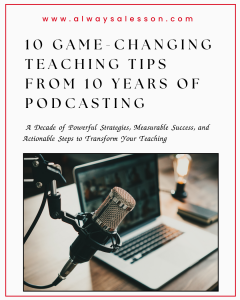Paideia Seminar
I was just recently trained in utilizing Paideia seminars as a teaching strategy during my Literacy block. It was quite an intensive in-service, full of information, examples, and brainstorming sessions. As most things in my life, I learn by doing. So, planning everything out in detail was becoming too frustrating. I had a general outline I knew I wanted to follow and then decided to jump in there and give it a shot; I could adjust accordingly later. My students are well behaved and love to help teachers become better, so this opportunity came during the right year! I explained to students what I had been learning (they love to know I learn things too!) and briefly gave them an overview of the activity; of course, with an objective in mind. Students were excited to try but hesitant because they had never done one before. “We’re gonna learn this thing together guys!” I encouraged them before we started.
If you are unsure of what I am referring to, here is a little background information. This teaching method originated in Greece and allows students to take on the reins of their learning. A teacher is not the leader in this scenario. Teachers pose a question for discussion and the students begin talking. The goal is for students to take a stand on an issue, back up their position with factual information, and debate with one another in a respectful manner. Shy students grow as speakers and outgoing students learn to share the floor. At first there is a lot of direction from the teacher, especially in modeling how to respond and wait your turn. But, by the end of the first seminar, students gain insights into their own thinking and experience alternative ways to interact with their peers. You can also incorporate a reflective time afterwards to discuss what went well and what needs to be improved upon for the next seminar. Handing over the responsibility to students as the driving force of discussion is the key! Check out some videos for ideas.
Some things I learned by the first experience are as follows:
- Allow students plenty of time to research the topic or reflect on their own beliefs prior to getting together as a group (provide any reading materials ahead of time)
- Use small groups, no larger than 10 students, so that students can speak multiple times and become more engaged in the experience (I divide my class into 2 groups and run seminar on different days)
- Keep a tally chart of who speaks to ensure some students don’t dominate conversation and encourage others to participate
- Allow awkward silence so students learn to share ideas and that you will not rescue the conversation (excluding extreme cases)
- Have fun! 🙂
I hope my lessons learned help you on your Paideia journey! I’ll be sure to update my “aha” moments after our second try.
Have you participated in a Paideia seminar? Have you done one with your class?
Please share your experiences!



